Deborah Ager's Blog, page 4
April 20, 2013
Poetry Month, Day 20*: Erica Dawson Recommends Measure
Since 2005, Measure has published the most innovative and compelling formal verse, picking up where The Formalist left off. The newest issue, “The Music Issue,” features Seamus Heaney, Carrie Jerrell, Sufjan Stevens, and Lucinda Williams. And as if that weren’t cool enough, Rob Griffith and Paul Bone have started Measure Press, which will publish several book-length collections of formal poetry a year.
You’ll be hard pressed to find a finer journal, and two nicer guys who just happen to be ridiculously talented poets.
—Erica Dawson
*Throughout Poetry Month 32 Poems will use this space to praise presses, journals, and readings series that bring poetry to us in a special way. Our hope is that we can point new fans in their direction and publicly thank editors and curators for their work. Check in with us again tomorrow for another poet’s recommendation.
↔

Erica Dawson’s second collection of poems, The Small Blades Hurt, is forthcoming from Measure Press in January 2014. Her first book, Big-Eyed Afraid, won the 2006 Anthony Hecht Poetry Prize. Her poems have appeared in Best American Poetry 2012 and 2008, Virginia Quarterly Review, Birmingham Poetry Review, 32 Poems, and other journals and anthologies. She holds a Ph.D. from University of Cincinnati, and is an Assistant Professor of English and Writing at University of Tampa.
April 19, 2013
Poetry Month, Day 19*: Rebecca Gayle Howell Recommends Larkspur Press
I want to draw your attention to Larkspur Press of Monterey, Kentucky. Larkspur is a letterpress with an admirable ambition: to publish emerging and established writers in editions that can be described as both fine and affordable. The Larkspur catalog includes new works by writers like Wendell Berry, Bobbie Ann Mason and Michael Moran and each book is set and printed on a hand-fed Chandler and Price, many of them hand-bound, and all include commissioned illustrations. Classical broadsides are also available.
The master printer and founder, Gray Zeitz, is a man who stands at what feels like seven feet, with a white beard long enough to make any hipster covet. He moved to the artist commune of Monterey, KY in the 1970‘s with a press and some type given to him by his teacher, the historic printer Carolyn Hammer. Since then he has stayed true to his original vision to be both publisher and printer; boutique printing did not interest him. Sometimes he had to raise tobacco or cattle to make ends meet, but for almost 40 years, Larkspur has printed new works of literature at prices competitive to mass market collections, in a process that can take up to two years to complete.
These days, despite rumors that ‘books are dying,’ Larkspur is making and selling more editions than ever. This is local literary economy at its best. Or, as one reviewer put it, ‘This is publishing on a human scale.’
—Rebecca Gayle Howell
*Throughout Poetry Month 32 Poems will use this space to praise presses, journals, and readings series that bring poetry to us in a special way. Our hope is that we can point new fans in their direction and publicly thank editors and curators for their work. Check in with us again tomorrow for another poet’s recommendation.
↔
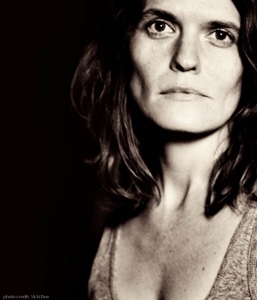
Rebecca Gayle Howell’s awards include a poetry fellowship from the Fine Arts Work Center and a Jules Chametzky Prize in Literary Translation. Library Journal chose Howell’s translation of Hagar Before the Occupation/Hagar After the Occupation (Alice James Books) as a 2011 best book of poetry. Hagar was also a finalist for the Best Translated Book Award (BTBA). In 2012 Howell received the CSU Poetry Center’s First Book Prize for Render/ An Apocalypse, selected and with a foreword by Nick Flynn.
Weekly Prose Feature: “A Collaborative Interview on Collaborations, Part 1” by Emilia Phillips
“Thou shalt eat and tire at the same time,” goes one of Denise Duhamel and Maureen Seaton’s “10 Commandments of Collaboration,” but with our technological interconnectivity, the collaborative process now extends far beyond a joint regimen and shared workspace. Collaborations, particularly between poets and poets and artists, function as epistolary exchanges, accountability systems, proving grounds, experimentation labs, and healing mechanisms.
Some collaborative teams may “chew the spaghetti” toward one another, if you will, like the Lady and the Tramp. Others may hurl their efforts at one another (and duck!) like dodgeball players. Whether collaborators approach a project with the hope that something new will be introduced into their own works or if they need the motivation of a friend, like an AA buddy, collaboration, particularly in the last ten years, has developed into a valid and increasingly prolific mode of writing. Just take a look at all the collaborative chapbooks that are out there next time you go to a writing conference. And ask yourself: What is writing but a kind of collaboration, an exchange and conversation, between the writer(s) and the reader?
In Part 1 of this ongoing interview, we have four teams of collaborators:
1. Traci Brimhall and Brynn Saito , authors of Bright Power, Dark Peace (Diode Editions, 2013)
2. Landon Godfrey and Holly Iglesias , whose project consisted of generating new material each day of Lent
3. Kyle McCord and Jeannie Hoag , authors of Informal Invitation to a Traveler (Gold Wake Press, 2012)
4. Adam Peterson and Laura Eve Engel , authors of [SPOILER ALERT] (Dzanc Books, 2012)
We asked the teams of collaborators to answer the questions that were most important to them or most pertinent to their collaboration project; some teams have chosen to answer only a few of the questions.
Stay tuned for the second part of this interview, arriving in the next month.
—Emilia Phillips
*
QUESTION 1: How does one start a collaborative project?
Traci Brimhall: One sidles up to a friend or stranger and asks if they want to get to know the bossiest side of you.
Brynn Saito: And the counterpart, especially if she isn’t writing many poems on her own, says yes!
Landon Godfrey: Desire and germinal uncertainty: begin!
Holly proposed using Lent as a defined period of work. Despite my unCatholicism, I was in after initial hesitation; I was worried I couldn’t meet the requirement of a poem a day.
Holly Iglesias: For our project, we set the time limit as the season of Lent (Ash Wednesday, February 13, to Holy Saturday, March 30).
Adam Peterson: I imagine there are many ways, but if you’re us, you are two writers who’ve already been collaborating in other ways—sharing work, giving notes, being friends—and who consciously decide to do a project together. From there, it’s just a matter of finding one.
Laura Eve Engel: We tried a couple of different things before we came up with the idea for [SPOILER ALERT], but I think the actual decision to write something together was a pretty simple “D’ya wanna?” “Yeah, d’you?” “Yeah.” And because we’re both people who try to get stuff done—Adam more than me, I think—we actually did it. So maybe the answer is “by showing up (together).”
QUESTION 2: How does one know it’s done? Do you set parameters at the beginning or does it fizzle out?
BS: Each individual poem had rules: nine stanzas, one stanza each, a designated poem location. But as for the overall project . . .
TB: . . . that fizzled. We moved out of our honeymoon phase and the energy in the project kind of evaporated. After not looking at it for over a year, though, we came back to it and wrote a final poem for it, which felt good. It was nice to do a post-mortem on the poems and figure out what we were up to after we got some distance from it.
LG: In general: What’s the goal? Have we satisfied the structure’s implied requirements? Have we altered our expected outcomes in a thrilling way?
For this specific project: Lent defined the beginning and the end. Holly proposed we rest on Sundays, but in defiance of God, I worked on Sundays, which helped me by maintaining dailiness and also by giving me a chance to make up missed days during the project period that I had already committed to printmaking work.
HI: The only additional parameter was no Sundays.
Kyle McCord: After I showed some poems from an early version of this manuscript to Anne Waldman, she asked me a question: how did I know when a poem was done? At the time I gave an answer about how the energy in a poem has to reach a particular apex that either resolves, rebukes, or remakes the original idea. Once that transformation has happened in a way that’s exciting, the poem is over. I’m not totally satisfied with my own answer mostly because I feel I can answer the question better on the page than I can in prose. But I’ve asked this question of a number of poets since Anne asked me, and based on their responses, I’ve noticed that this question is something that lyric poets especially seem to struggle with.
It’s already hard enough to tease out the dimensions and boundaries of a book—Alan Michael Parker has a particularly intriguing essay on the topic. But how do you know when a collaborative book has achieved the kind of apex you’re looking for? Informal Invitation to a Traveler was easily the most difficult book I’ve ever arranged, but Jeannie did figure out that at one point that Miss Kim stops responding to J.R., that the bond that had allowed them to communicate had been broken. Honestly, I now have no idea how she figured this out, other than by staring down the poems and rearranging them for hours on end. But once she realized it, we knew that J.R. needed to meditate on that break, and we highlighted this by adding an extra J.R. poem at the end. But, unlike other parts of the book that we had to fill in more cautiously, we knew that was the ending.
At the end, we had more parameters that we dropped than we kept. Our original ambition was to remain on a rigid schedule (a poem each week), but we eventually had to give that up. Jeannie and I had to settle for encouraging each other along at the pace we could go, which was fine. We also had some conceptions about who the characters were in the book, but the conversation began to mold them in ways we couldn’t have anticipated. So, that had to go out the window as well. However, we did agree throughout the process that we were intent on writing a book that we would fully revise when we met up during the summer. That certainly came to fruition!
Jeannie Hoag: When we started the project, we were living in the same town, and we met up a few times to hash out how we thought things were going and unforeseen developments. It was during those first few meet-ups, once we had seen how the project was developing, that we were able to lift some of the specifics that we had started with. But I think it was still important to have those constraints at the beginning, because we didn’t yet know what would be important and what would be extraneous.
When we met to revise the work, it had been a month or so since the last poems were exchanged. We had set a sort of arbitrary end goal, but I think we both had the sense it was done before we officially reached the end. Similar to running past the finish line, or writing a poem past what seems like the last line—you want to build in some room to make sure you didn’t stop too soon. When we met in the summer to revise the work, there were some poems that didn’t seem to work, and because we had the extra buffer, it was easier to make cuts or envision different final arrangements.
AP: For [SPOILER ALERT], I think we decided fairly early on what length of project we were going to have and maybe adapted it only slightly to fit the requirements of the contest we submitted it to. I think? I can imagine us having kept going if we hadn’t found a reason to stop. I know this, those conversations were the least organic thing about the collaboration.
LEE: We had very few parameters, aside from knowing that the form of each piece was something we were calling a “prose chunk.” And that the first sentence of each would somehow talk back to the phrase “[SPOILER ALERT].” Arriving at those parameters involved some trial and error, and I think it was a relief when we’d figured them out; it was much more fun to just write after that.
QUESTION 3: Talk a little bit about the etiquette of authorship. If you’re both writing poems, do you seek publication together or separately?
TB: Since we each had a fairly equal hand in all poems, I see them as co-written, and when we submitted them, we submitted them as collaboratively written poems.
BS: Yes, each poem is both of us. It also becomes a new and separate thing, apart from either of us. The poems take on a life of their own. At times, it’s hard for me to recall which lines are mine, and which are Traci’s.
LG: I never thought about publishing our poems as a joint project and tried diligently not to think about publication of any sort at all. In fact, I did not look at my own poems again after the day they’d been written; I read them all together on the 41st day.
HI: We each wrote separately, but reading over the two sets of poems, you can occasionally see similar ideas, images, approaches.
KM: Jeannie and I wrote the poems back and forth to one another, but our ideas and revisions shaped the work so much that we knew before we finished the book that the poems would be published under both our names.
I’ll be excited to see how other folks respond to this question because I’ve always wondered how other collaborations handled the business side of things. In our case, Jeannie was neck-deep in library school, and, by comparison, I was adjuncting at a community college. It made much more sense for me to handle the submission side of things—getting the poems placed, finding a home for the book (which I should specifically thank Kristina Marie Darling and Jared Michael Wahlgen for!).
We had a joint email that both of us could access so that the submission process was transparent. At the time that Jeannie and I were placing the poems, fewer journals were interested in collaborative pieces. I see many more collaborations today in web journals in particular. iO: A Journal of New American Poetry just put out our first collaborative chapbook at AWP, and readers flocked to the table to pick it up. It makes me glad to think that collaboratively written poems are finding more of a place out in the world now. When Jeannie and I published poems in journals, we would often be the only collaboration in the whole magazine.
JH: I would guess that the rules for collaboration differ for each project and each pairing or group of people, but in general it’s important to have a collaborator who you can work with. In a lot of ways, I was probably a nightmare to work with, but Kyle and I were able to talk about the bumps along the way. We had taken classes together, and from that we had a sense of how to communicate about our priorities, and what we thought the next steps would be.
AP: Well, as long as everyone’s names are on it, I can’t imagine it matters. If you’ve reached that point, I hope you’ve figured out something about etiquette already. I believe we each took batches to submit ourselves just to break up the work but we certainly talked about what should go where.
LEE: [SPOILER ALERT] was kind of a one-off project—we were more interested in it as a small book, I think, than as individual pieces we wanted to get out in the world—and we were lucky that The Collagist/Dzanc wanted it to be a small book, too. So we didn’t spend a lot of time mired in the logistics of sendouts.
QUESTION 4: How does collaboration help you in your own work?
BS: It’s helped me to let go. I can more easily surrender to the creative energy present in the moment, similar to the surrender that happens when I write poems with Traci.
TB: I think it’s helped me see my bad habits in writing. Brynn and I have a lot in common in some ways in our writing, but we also have different syntactical habits and a style of phrasing that’s unique to each of us. It was good to have collaboration teach me these things about myself.
LG: It’s useful to get one’s mind blown by unforeseen methods, solutions, problems in another poet’s work. And how fantastic it is to know an excellent poet, whose work you admire, is waiting to see your poem; that’s inspiring because it’s a demanding labor condition. And an encouraging one: an ideal reader wants to see your poem. And to look forward to hers: exciting.
HI: When I read Landon’s poems, I know I’m in the presence of high intelligence and artistry. Also, being able to read her poems-in-the-making makes me feel smart too.
On another note, making the mutual commitment has kept me on task, which I’ve needed to do instead of moaning and groaning about insufficient time to “really write” (whatever that means) during the academic year.
AP: In a lot of ways. Not least because those other collaborations are ongoing, hopefully. I look at it this way: you’re always collaborating as a writer—partners, editors, literature, the world—but you get to choose how deep those collaborations go. The more open you are to those relationships, or even just one with another person, makes your work bigger.
LEE: I always have other people’s voices in my head when I’m writing. Other poets. Dead poets. People from workshop. Those jerks who do Radiolab. One of these voices is Adam’s, and it’s a pretty specific and helpful voice—if one that doesn’t let me off the hook—because of the work we did together.
QUESTION 5: Why do a collaboration?
TB: Because your best friend is on the other side of the country and you want to stay in touch or because you’re stuck in your own writing projects or because the stranger in the coffee shop is super cute and you feel awkward suggesting making out so you suggest poems instead.
BS: Absolutely. Also, as a poet, I can easily get attached to having complete creative control over my work, and collaboration helps break the illusion of control. I often assign collaborative art and writing projects to my students. They’re fruitful, surprising, and they build community across voices and disciplines.
LG: To muck around in the unknown.
HI: Camaraderie! Guilt! Fun! Built-in, handpicked audience!
KM: I think one objective for writers should be to understand on a very deep level and learn from the voices they hear not just on the page but in the world around them. From Jeannie, I learned valuable ways to think about line breaks, narrative, and the how she saw the basic structures that held her voice together. I could never have gotten that from just reading her poems.
We’ve talked a bit before about how neither of us can access the voices in this book again. Both J.R. and Miss Kim emerged from particular parts of our lives where both of us were struggling thousands of miles away from each other. But I know that I must access certain parts of my character’s voice: the surprising jumps, the rich sort of images that character burns through. It helped me understand the voice I wanted to write with.
A year or two ago, I closed down the joint email that Jeannie and I used to submit the work. And I remember the mixed feelings I had about that. I felt glad that the process of submitting poems from that book was finished, but I did feel sad that it also represented the last sort of piece of what Jeannie and I started in a brewery in Northampton nearly three years ago. I think collaboration, especially a book-length collaboration, bonds two writers together in a way that’s not many other fields could replicate. It’s a totally unique and amazing phenomena.
JH: When Kyle proposed the collaboration to me, I looked it as a personal experiment—despite my wishes, I’m generally not much of a project-based writer. Working with Kyle seemed like a great way to focus on a project for an extended amount of time.
Because of the way we arranged our collaboration, for each round of poems, there was always something new to respond to. That definitely helped me stay on track. And seeing Kyle’s poems in connection with mine, it was remarkable to see the different ways we approached similar topics. I really enjoyed the surprise of seeing where the next poem took us.
AP: Because the world is big and you are not alone in it. Or, if that’s lame, then because they’re fun.
LEE: Collaboration can turn what’s often a personal process into something that’s pretty exposed, which is scary, even if it’s with a partner you’ve chosen to trust. It encouraged me to practice a different approach to something I’m somewhat unconsciously used to thinking of in terms of—for better or worse—ownership. And that’s changed my process for the better, for sure.
QUESTION 6: What is your definition of collaboration?
BS: A cool creative synthesis born from individual offerings and a little hard work.
TB: What she said, but with some of me in it.
LG: Co-work-ation.
HI: Sorry; don’t have one.
AP: Well, obviously it’s proven to be pretty broad. Despite this sense so many want to have of the author as lonely, individual genius, I really think very little gets written alone and most of what does is probably terrible.
LEE: I like that “collaboration” can define both process and product. Collaboration is certainly process conscious and process oriented, and I like that too. It’s an opportunity to externalize something that often goes unarticulated, which in some sense can also mean unexamined.
QUESTION 7: As a poet, how and when do you collaborate with other poets?
TB: My collaboration with Brynn is the only official collaboration with another poet that I’ve done, though trading writing prompts with friends and sharing work also feels like a kind of collaboration. When we’re all working with the same ideas or language, there seems to be a similar kind of communication, though our voices remain distinct rather than the blending of our voices that Brynn and I tried to make happen.
BS: Same with me: Traci’s been my only poet collaborator and I think that’s in part because she’s a dear friend of mine, who I trust with my words. That trust has made me feel free to go to all sorts of strange, dark, and playful places in the co-writing process.
LG: In this instance, I accepted a generous offer for collaboration. The timing of Holly’s offer was perfect; I wanted to change my writing practice, to go from fitful bouts to a regular and sustained habit. And the how: I said, “Yes.”
HI: Beyond regular meetings to workshop new work with a fellow poet, I’ve not had this type of set-up—this long-term daily commitment. My only other experience of collaboration was a mail-based exchange of collage art with Maureen Seaton.
AP: Conveniently, I’m not a poet. So this time. This one time.
LEE: Conveniently, Adam is not a poet. So never. Never, ever. (Adam is, indeed, a poet. So only this once.)
QUESTION 8: What was your best collaboration? What made it successful?
BS: I’ve collaborated with other artists—choreographers who have adapted my words in their pieces, visual artists who have used my text in their work—and those sorts of interdisciplinary collaborations have been great. Traci and I have been able to sustain our co-writing, all the way through to the publication of a chapbook, which has made the process a deep and rewarding one.
TB: Working with Brynn was great because we got to have a dialogue about our work. I’ve also loved working with a comics artist on a poetry comic and a visual artist who did a broadside of my work because we were able to talk about our processes, interpretations, and visions for the final version. A large part of what I enjoy about working with other writers and artists is the chance to have conversations about our work.
LG: This regime succeeded in getting me back in an atelier frame of mind. I like the idea of going to the studio every day to see what happens. Even though the collaboration is finished, I’m writing every day.
HI: Working with Landon for this Lenten project was very successful in my mind. The clear time constraint helped me get the work done, release it and have the satisfaction of it being read quite soon by a brilliant, insightful reader. That there was absolutely no expectation of response helped too.
AP: I’ve been fortunate to be part of two and only two amazing collaborations, [SPOILER ALERT] and a story called “The Single Father” with my friend Dave Madden. That both were successful I think is solely a matter of my respect and admiration for the other person and her/his writing.
LEE: [SPOILER ALERT] is my best and only experience with collaboration, unless you count the poems I’ve collaborated on with gin. One was successful because of a deep, mutual admiration as well as a little bit of ruthlessness that follows from a desire to annihilate the sense of a single author through aggressive revision. The other was successful because gin wrote the poems while I took a nap.
QUESTION 9: Worst? In hindsight, what about it made it so bad?
TB: I don’t know if I’d call it the worst, but I’ve preferred the collaborations in which there is an exchange between writer/writer, writer/artist, writer/musician. When a piece gets handed off and another person interprets it the way they wish is still interesting, but I feel like that’s often the relationship between writer and reader, and part of what makes collaboration special in a shared endeavor.
BS: I don’t think I’ve had any negative experiences collaborating with others writers and artists (yet . . . ).
AP: No answer to this, thankfully.
LE: Me neither.
QUESITON 10: Was there any pressure to perform?
BS: Nope.
TB: Constantly.
LG: Yes! Holly had proposed we send our poems by 10 a.m., though for me, that was more like 11 a.m.
HI: Yes indeedy: A poem a day by 10 a.m.? That’s serious pressure.
AP: O, a great deal. Part of that respect and admiration means constantly trying to please your partner and live up to the awesome work she’s sending back. For [SPOILER ALERT], I’m pretty sure 95% of what I wrote was done solely in an attempt to make Laura Eve laugh. Once she maybe smiled.
LE: Adam is sort of virtuosic, in that he consistently nails the ratio of writing quickly to writing well. He’d pump out these little prose chunks on his phone at the bar and wag them in front of my face and I’d be furious and thrilled. I think my best contributions to [SPOILER ALERT] were occasioned by pure fear and embarrassment.
QUESTION 11: Did you offer feedback or critique of other collaborator’s work? Did they to you?
TB: Well, part of the rules of our collaboration kind of involved that. The person who didn’t begin and end the poem was also its editor so that we each had a strong measure of creative control in each poem. It wasn’t quite direct feedback, but sometimes it let you know what your friend doesn’t think is working.
BS: Yes, in editing we provided feedback. And the process was pretty clean, considering how fraught the editing process can be when I work on my own poetry. If Traci thought a word or line should go, and it was my line, I totally trusted her instinct, and we’d cut it. Again, that process speaks to the surrender inherent in the collaborative process. As we’ve both noted elsewhere, we’ve loved the freedom that comes from that surrender. It’s both fun and deeply empowering.
LG: In this collaboration, I loved being free from the yoke of feedback and critique on a daily basis. There was just the next day and the next poem. We’ve met a few times to talk about the process. And I’m looking forward to talking about some specific poems from this project with Holly in the near future.
HI: We agreed not to respond to the poems, but we have been meeting lately and reflecting on the experience, and next we will look at some of the poems.
AP: Of course. Although one of us had to write the first drafts, after that, the pieces were up for grabs and became “ours.” Now I can’t remember who first wrote what which has led to some embarrassment…
LEE: Most of our “conversations” about these pieces took place in the track changes feature of Word. Actually, if you don’t count the words in the pieces themselves, the whole thing was written more or less non-verbally. We didn’t discuss the changes, we just made them. It was like being in the worst workshop—we were 100% prescriptive. But we trusted each other and subjected ourselves to each others’ harshness and I think that’s what has landed us in this place where we can’t tell whose work is whose anymore. It seems to me that there’s no point in collaboration unless you’re interested in making that feedback/critique an active part of the process.
↔
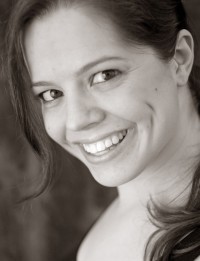
Traci Brimhall is the author of Our Lady of the Ruins (W.W. Norton) and Rookery (Southern Illinois University Press). Her poems have appeared or are forthcoming in The Kenyon Review, Slate, Ploughshares, New England Review, The New Yorker, and Best American Poetry 2013. She’s received fellowships from the Wisconsin Institute for Creative Writing, the National Endowment for the Arts, and the King–Chávez–Parks Foundation.
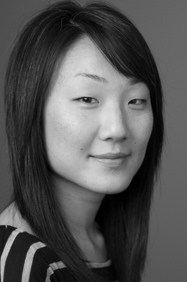
Brynn Saito is the author of The Palace of Contemplating Departure (Red Hen Press, 2013). Her poetry has been anthologized by Helen Vendler and Ishmael Reed; it has also appeared in Virginia Quarterly Review, Hayden’s Ferry Review, Ninth Letter, Pleiades, and Drunken Boat, among other journals. Brynn is the recipient of a Kundiman Fellowship, the Poets 11 award from the San Francisco Public Library, and the Kew West Literary Seminar’s Scotti Merrill Memorial Award.

Landon Godfrey is the author of Second-Skin Rhinestone-Spangled Nude Soufflé Chiffon Gown (Cider Press, 2011) and a limited edition chapbook, In the Stone: Three Prose Poems (2013). Her poems have been nominated for a Pushcart Prize and published in The Southeast Review, Lyric, Beloit Poetry Journal, POOL, Studium in Polish translation, Best New Poets 2008, Verse Daily, and elsewhere. She’s received a 2013 Regional Artist Project Grant and a 2011-2012 North Carolina Arts Council Artist Fellowship.
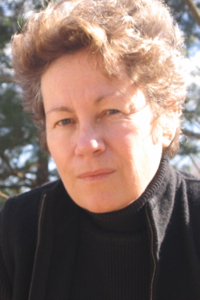
Holly Iglesias is a poet and translator whose publications include Angles of Approach (White Pine Press), Souvenirs of a Shrunken World (Kore Press) and most recently the chapbook Fruta Bomba (Q Ave Press). She has received grants and fellowships from the National Endowment for the Arts, the North Carolina Arts Council, the Massachusetts Cultural Council and the Edward Albee Foundation. She is the Associate Director of the Master of Liberal Arts Program at University of North Carolina-Asheville.
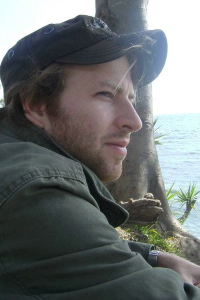
Kyle McCord is the author of three books of poetry including Sympathy from the Devil from Gold Wake Press. He has work featured in Boston Review, Denver Quarterly, Gulf Coast, Third Coast, Verse and elsewhere. He’s the co-founder of LitBridge and co-edits iO: A Journal of New American Poetry. He teaches at the University of North Texas.
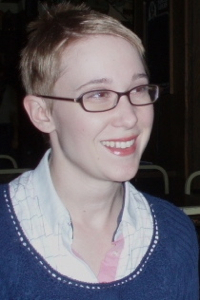
Jeannie Hoag was born in Wisconsin and lives in Buffalo, New York. Her work has appeared in The Blue Letter, GlitterPony, NOO Journal, and notnostrums. Her chapbook New Age of Ferociousness was published by Agnes Fox Press, and Informal Invitation to a Traveler, a collaborative book with Kyle McCord was published through Gold Wake Press. She is a librarian.
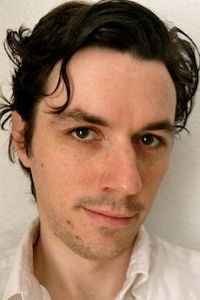
Adam Peterson is the co-editor of The Cupboard. His fiction can be found in The Normal School, Ninth Letter, and elsewhere.
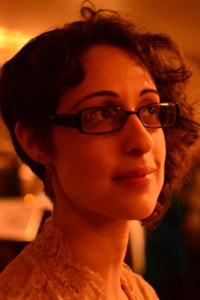
Laura Eve Engel’s work is forthcoming in the Boston Review, Columbia Poetry Review, Tin House, and elsewhere. She is the Residential Program Director of the UVa Young Writers Workshop.
Each Friday we will publish a new essay, review, or interview for the 32 Poems Weekly Prose Feature, edited by Emilia Phillips. If you have any questions or comments about the series, please contact Emilia at emiliaphillips@32poems.com.
April 18, 2013
Poetry Month, Day 18*: Mark Cox Recommends New Ohio Review
In the Seventies, when I was introduced to “little magazines” (yes, that’s what we called them), one of the first periodicals I read was The Ohio Review. Founded by Wayne Dodd and Stan Plumly, and edited by Dodd for some thirty years, that venerable magazine published some of the best poetry, author interviews, and craft symposia in the nation. Then, in 2001, when Dodd retired, so did the magazine, and that was that.
So, since 2007, when New Ohio Review was born, I’ve watched eagerly to see just how it would measure up. I have not been disappointed. Editor Jill Allyn Rosser has overseen the development of NOR as a front rank venue for significant contemporary literature. Recognized primarily as a poetry journal (although they do publish nonfiction and fiction), NOR has received enthusiastic praise from such notable poets and editors as Robert Pinsky, Eleanor Wilner, Tony Hoagland, Billy Collins, David Lehman, and Denise Duhamel. And with good reason—the editors are selective and have an eye for outstanding work. Seven poems appearing in the journal over the last three years have been reprinted in the Best American Poetry series (one in the 2013 25th Anniversary Best of the Best edition), another four poems have won Pushcart Prizes, and a story has been reprinted in Best American Short Stories.
In short, I highly recommend checking out New Ohio Review. The writing is terrific and every issue has an inspired feature section (one was entitled “Six Poets on Six Movies”) you won’t find anywhere else. Given her workload, Jill Rosser may shudder at this thought, but perhaps she is on her way to her own thirty-year run?
—Mark Cox
*Throughout Poetry Month 32 Poems will use this space to praise presses, journals, and readings series that bring poetry to us in a special way. Our hope is that we can point new fans in their direction and publicly thank editors and curators for their work. Check in with us again tomorrow for another poet’s recommendation.
↔
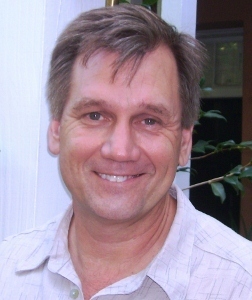 Mark Cox’s latest book is Natural Causes (Pitt Poetry Series). He also recently edited Jack Myers’ posthumous The Memory of Water (New Issues). He teaches at University of North Carolina, Wilmington, and in the Vermont College MFA Program.
Mark Cox’s latest book is Natural Causes (Pitt Poetry Series). He also recently edited Jack Myers’ posthumous The Memory of Water (New Issues). He teaches at University of North Carolina, Wilmington, and in the Vermont College MFA Program.
April 17, 2013
Poetry Month, Day 17*: Laura McCullough Recommends American Poetry Review
One of my favorite literary magazines is American Poetry Review. It has been publishing poetry and essays since the 70s, and recently relocated to the University of the Arts in Philadelphia, which should ensure its future in this difficult time for print mags. The reason I like APR might seem selfish to anyone who knows that they’ve published some poems of mine over time as well as some of my essays, but the reasons that I admire them are the reasons I submitted to them, not the other way around.
When I first began seriously reading and writing poetry just after 9/11 (I had recently finished an MFA in fiction), APR was one of the magazines I turned to as I began to understand the contemporary poetry landscape, and I found it was one of the very few places I could find long essays by poets on poetry and one of the few places that published a wide array of aesthetics in poets/poetry, often including numerous poems by poets. I liked the daily-ness of the format, the newspaper layout, the sense you could take poetry folded under your arm onto the bus, to the beach.
And I loved the essays, the ranginess of them, and the fact that they were unapologetically long and thoughtful. When I began writing essays myself, I found that in order to think through what I was considering, it often took 5000 or more words to do so. None of this 650 word limit at APR; the editors were and are willing to give poets the space to consider topics, linkages, and books thoroughly, to pin ball between the cultural, the political, and the personal, to wade belly deep in aesthetics, to wallow and roll in a beloved poet’s entire oeuvre, to explore as well as unpack and explicate. I love the editors for their generosity and intelligence as much as for their risk taking and willingness to make space for new as well as established writers. For my money, I love APR.
—Laura McCullough
*Throughout Poetry Month 32 Poems will use this space to praise presses, journals, and readings series that bring poetry to us in a special way. Our hope is that we can point new fans in their direction and publicly thank editors and curators for their work. Check in with us again tomorrow for another poet’s recommendation.
↔
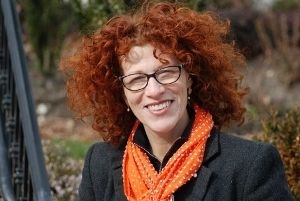
Laura McCullough‘s books of poetry include Rigger Death & Hoist Another (Black Lawrence Press, June 13), Panic (winner of the Kinereth Gensler Award, Alice James Books, 11), and Speech Acts (Black Lawrence Press, 10). She is the editor of two anthologies, The Room & the World: Essays on the poet Stephen Dunn, (Syracuse UP, forthcoming 13), and A Sense of Regard: Essays on Poetry and Race, (U of Georgia P, slated for fall 014). She is the editor of Mead: the Magazine of Literature and Libations and an editor at large for TranStudies Magazine.
April 16, 2013
Poetry Month, Day 16*: Corey Van Landingham Recommends LitRagger
It was difficult for me to think of just one literary journal I adore, so I wanted to introduce people to LitRagger: the first app that allows people to read many of my personal favorite literary journals and magazines on their iPads and iPhones.
When Adam Lefton and Landon Sandy put their heads together to form LitRagger, they had poetry in mind. Though the journals featured are not solely poetry—they have some of the finest fiction and nonfiction out there as well—the problem of solving the digital formatting nightmares of poetry past was part of the initial impetus to start the app. That, and allowing journals to start to publish digitally without having to send out a PDF. Not only is the app affordable for the journals that are a part of it, but it’s also a less expensive way to subscribe to journals you love without having to lug all of them around or keep up with address changes (because, let’s face it, we’re nomads, us literary folk, and not always on top of the change of address forms). LitRagger is easy to use, and pretty sexy looking to boot.
LitRagger has 18 journals in their app right now. And the best part? You’ll want to read every single one. FIELD, Gulf Coast, New England Review, and Sycamore Review are all available, and this new app will only continue to grow. LitRagger also always features a free story or poem on the home screen. Right now it’s Sherman Alexie’s curated Native American Portfolio from Prairie Schooner, which you don’t want to miss. And don’t just take my word for LitRagger’s success—when the app launched in December, they were picked as Top New App of the Week by The Guardian.
—Corey Van Landingham
*Throughout Poetry Month 32 Poems will use this space to praise presses, journals, and readings series that bring poetry to us in a special way. Our hope is that we can point new fans in their direction and publicly thank editors and curators for their work. Check in with us again tomorrow for another poet’s recommendation.
↔
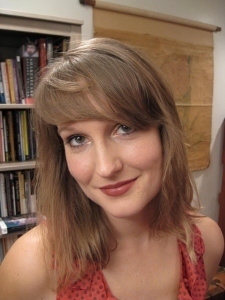
Corey Van Landingham is the author of Antidote (forthcoming from Ohio State University Press), winner of the 2012 Ohio State University Press / The Journal Award in Poetry. She recently completed her MFA at Purdue University, where she was a Poetry Editor for Sycamore Review. Her poems have appeared or are forthcoming in AGNI, Best New Poets 2012, Colorado Review, Crazyhorse, Indiana Review, Kenyon Review, Southern Review, and elsewhere. She will begin a Stegner Fellowship at Stanford University in the fall.
[image error]
April 15, 2013
Poetry Month, Day 15*: Gary Jackson Recommends Tuesday; An Art Project
How could I not love a journal that employs a semicolon in its title? Tuesday; An Art Project goes against the grain of the traditional idea of a journal. Instead of bound pages between two covers, we get a stack of postcard-sized prints (and one actual postcard) with beautifully rendered poems, photos, and other visuals on each card. There are no pages, no numeration on the cards (aside from the issue number), and usually there’s a surprise insert that features an interview or amalgamation of written/visual texts. Sure, there’s a table of contents printed on the sturdy envelope that holds the journal (also of simple and elegant design), but there’s no reason to follow the order dictated, and why should you? Hell, maybe some of the poems have even decided to visit other issues to kick it with them for a minute. Maybe that Megan Garr poem wants to hang out with Phillip Williams’ poem, who am I to judge? Poems do what they want to do when they have freedom to move.
Maybe you want to hang one of the poems on your wall, or gift one to someone who you think would appreciate its power. Leave poems in a café, on a free magazine rack. You could part and parcel the whole damn thing if you wanted, seeing as how they’re printed for sharing, for standing on their own. I imagine that editor Jennifer Flescher would be more than pleased, being a bookmaker, photographer, poet, herself. In her own words, “Work should be enjoyed tactilely. Poems should be kept, when loved. Passed on. Sent out.”
So let them scatter across your desks, your wife’s armoire; let them sneak in your textbooks when you go to teach, hide in the back of your car, taped to the fridge, your mirror, find their way into someone else’s hands.
—Gary Jackson
*Throughout Poetry Month 32 Poems will use this space to praise presses, journals, and readings series that bring poetry to us in a special way. Our hope is that we can point new fans in their direction and publicly thank editors and curators for their work. Check in with us again tomorrow for another poet’s recommendation.
↔
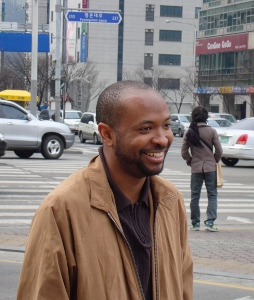
Born and raised in Topeka, Kansas, Gary Jackson is the author of the poetry collection Missing You, Metropolis, which received the 2009 Cave Canem Poetry Prize. His poems have appeared in Callaloo, Tin House, The Normal School and elsewhere. He’s also been published in Shattered: The Asian-American Comics Anthology, and is the recipient of both a Cave Canem and Bread Loaf fellowship. An MFA graduate from the University of New Mexico, Jackson currently teaches full-time at Central New Mexico Community College in Albuquerque, New Mexico, and at the low-residency MFA program at Murray State University in Murray, Kentucky. He has been a fierce lover of comics for over twenty years.
April 14, 2013
Poetry Month, Day 14*: Adam Houle Recommends Poetry at Round Top
A gem of a festival, Poetry at Round Top enters its twelfth year as a premiere literary event in Texas. The festival grounds, snug in the hills between Austin and San Antonio, cover 200 acres, and the cultivated gardens remind me of the wildness that might thread through the confines of a formed thing—an apt spot to consider the latest round of revisions. Poetry at Round Top’s director, Jack Brannon, and his all-volunteer staff are smart, kind, and have fostered the quiet energy you can’t help but absorb. Part celebration, part conference, Poetry at Round Top acknowledges the rigors of craft in a three-day weekend of readings, workshops, and good fellowship. For this year’s events and more, check out their website.
—Adam Houle
*Throughout Poetry Month 32 Poems will use this space to praise presses, journals, and readings series that bring poetry to us in a special way. Our hope is that we can point new fans in their direction and publicly thank editors and curators for their work. Check in with us again tomorrow for another poet’s recommendation.
↔
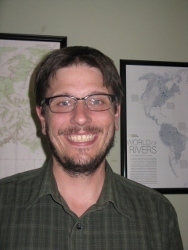 Adam Houle holds a PhD in Poetry Writing from Texas Tech. His poetry has appeared in Willow Springs, Tar River Poetry, Best New Poets 2010, and elsewhere. He lives in Lubbock, Texas.
Adam Houle holds a PhD in Poetry Writing from Texas Tech. His poetry has appeared in Willow Springs, Tar River Poetry, Best New Poets 2010, and elsewhere. He lives in Lubbock, Texas.
April 13, 2013
Poetry Month, Day 13*: Chloe Honum Recommends The Paris-American
I am happy to recommend The Paris-American, an innovative online magazine and reading series founded by poet C. L. O’Dell in 2012. Every week, a single poet’s work is featured on the website, presenting the poems randomly throughout the week. The website is elegant and easy to navigate, and the poems published are consistently wonderful. The Paris-American reading series is held annually at Poets House in NYC. I find it especially exciting that these readings feature emerging poets alongside well-established ones. The 2013 reading will take place on April 26 when the readers will be Roger Reeves, Christopher Kondrich, Matthew Zapruder, and Yusef Komunyakaa.
—Chloe Honum
*Throughout Poetry Month 32 Poems will use this space to praise presses, journals, and readings series that bring poetry to us in a special way. Our hope is that we can point new fans in their direction and publicly thank editors and curators for their work. Check in with us again tomorrow for another poet’s recommendation.
↔
 Chloe Honum is the recipient of a Ruth Lilly Fellowship from the Poetry Foundation. Her poems have appeared in The Paris Review, The Southern Review, The Journal, and elsewhere. Find her online at www.chloehonum.com.
Chloe Honum is the recipient of a Ruth Lilly Fellowship from the Poetry Foundation. Her poems have appeared in The Paris Review, The Southern Review, The Journal, and elsewhere. Find her online at www.chloehonum.com.
April 12, 2013
Poetry Month, Day 12*: Deborah Ager Recommends the Joaquin Miller Cabin Poetry Series
What other poetry series shares its bug spray?
Every summer in June and July, poets come from the DC area and around the country to read in the Joaquin Miller Cabin Poetry Series. Past poets have included Kelly Cherry, Jennifer Militello, Stanley Plumly, Jericho Brown, Adam Vines, Brad Richard, Dan Albergotti, and Traci Brimhall. Readings have taken place in Miller’s Cabin, beside a stream, and inside a planetarium.
Washington, DC provides a home to many an important monument. Since 1883, Washington, DC has been home to Miller Cabin thanks to Joaquin Miller. And the city has been home to the Miller Cabin Poetry Series since 1978 thanks to founder Karren Alenier.
 For this series, we have braved thunderstorms and bugs in order to listen to poetry. We have shared our food, our bug spray, and our disaster survival skills. When Luke Johnson read, a thunderstorm swept in fast. The audience ran for cover under a picnic shelter. With water swirling around our ankles—the rain was that heavy that fast—we moved to our backup location to finish the reading. While that all sounds dramatic, we’ve also spent many calm summer nights enjoying the company of other poets while listening to poets read from their recent works.
For this series, we have braved thunderstorms and bugs in order to listen to poetry. We have shared our food, our bug spray, and our disaster survival skills. When Luke Johnson read, a thunderstorm swept in fast. The audience ran for cover under a picnic shelter. With water swirling around our ankles—the rain was that heavy that fast—we moved to our backup location to finish the reading. While that all sounds dramatic, we’ve also spent many calm summer nights enjoying the company of other poets while listening to poets read from their recent works.
We call this series “Miller Cabin” for short, and the cabin has consistently played a large role. In fact, you can trace this series in its relation to the cabin.
· In 1883, Joaquin Miller built a cabin as a wilderness writing retreat. He built it in a place now known as Malcolm X Park (once known as Arlington Heights).
· In 1976, physicist Jim Beal persuaded the National Park Service to give permission to The Word Works to use the cabin for poetry workshops.
· In 1978, Karren Alenier started the poetry series and held it inside Joaquin Miller’s cabin (by candlelight!) until the audience became too large for that space.
· In the 1990s, I attended my first Miller Cabin reading in Rock Creek Park to hear Stan Plumly read his poems. Readings took place next to the stream by the cabin.
· In 2009—I can’t quite recall the year—I joined Rosemary Winslow and Kathi Morrison-Taylor as a co-director of the series.
· Around 2011, we traded in our space by the stream for the planetarium in Rock Creek Park around the corner. While everyone loved the cabin, few minded the addition of air conditioning or the proximity of horses.
· We became the first and only poetry series to begin with a planetarium show hosted by a park ranger. We learned a lot about stars while sitting in white spaced-aged seats (think George Jetson).
· In 2012, we projected a photo of the cabin onto a screen and held the reading in an auditorium downstairs from the planetarium.
Although the venue and people have changed over time, the cabin and nature have remained integral to this reading series.
The Word Works, a nonprofit literary and educational organization, hosts the series and shares this about the cabin on their website:
Joaquin Miller “stayed 10 years in the ‘woods’ where he was frequently visited by the curious. Disappointed at not being appointed as Ambassador to Japan, Miller went west to settle in the Oakland Hills of California. He gave his cabin to a friend, who soon gave it to the Sierra Club. In 1912, one year before Miller’s death, the National Park Service became its new owner. The Park Service disassembled, moved, and rebuilt it in its current location in Rock Creek Park. Meanwhile, Mr. Miller built a similar cabin in the Oakland hills. There he planted over 2000 evergreens and created an amphitheater where he produced his plays. He became known as the Poet of the Sierras.”
I, too, have been disappointed at not being appointed ambassador to Japan. However, we all must move on from such tragedies.
With this series, you never know what will happen next.
More about Miller Cabin and Joaquin Miller
—Deborah Ager
*Throughout Poetry Month 32 Poems will use this space to praise presses, journals, and readings series that bring poetry to us in a special way. Our hope is that we can point new fans in their direction and publicly thank editors and curators for their work. Check in with us again tomorrow for another poet’s recommendation.
↔
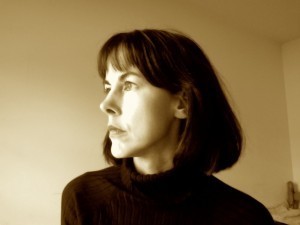 Deborah Ager is co-editor of The Bloomsbury Anthology of Contemporary Jewish American Poetry (2013) and Old Flame: Ten Years of 32 Poems Magazine (2013) and author of Midnight Voices (2009). She’s a founding board member of 32 Poems Magazine.
Deborah Ager is co-editor of The Bloomsbury Anthology of Contemporary Jewish American Poetry (2013) and Old Flame: Ten Years of 32 Poems Magazine (2013) and author of Midnight Voices (2009). She’s a founding board member of 32 Poems Magazine.



